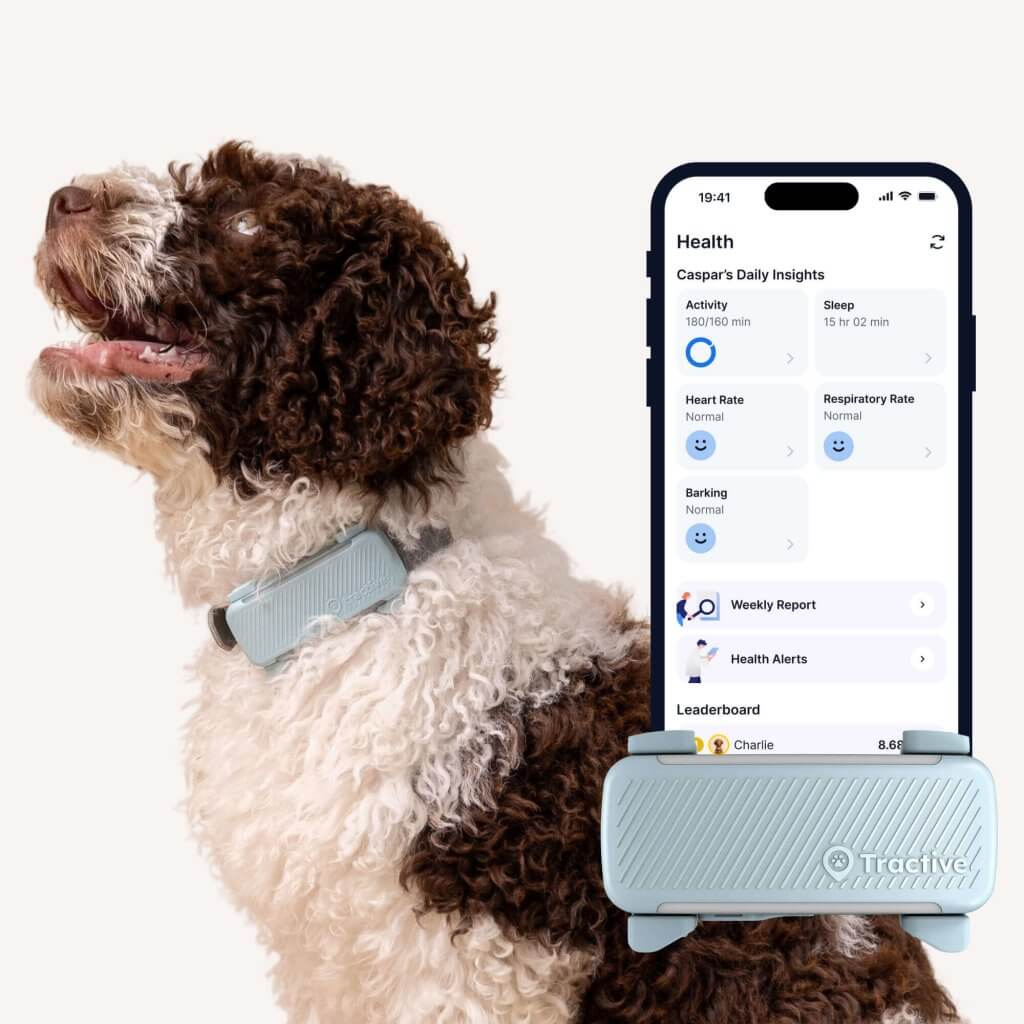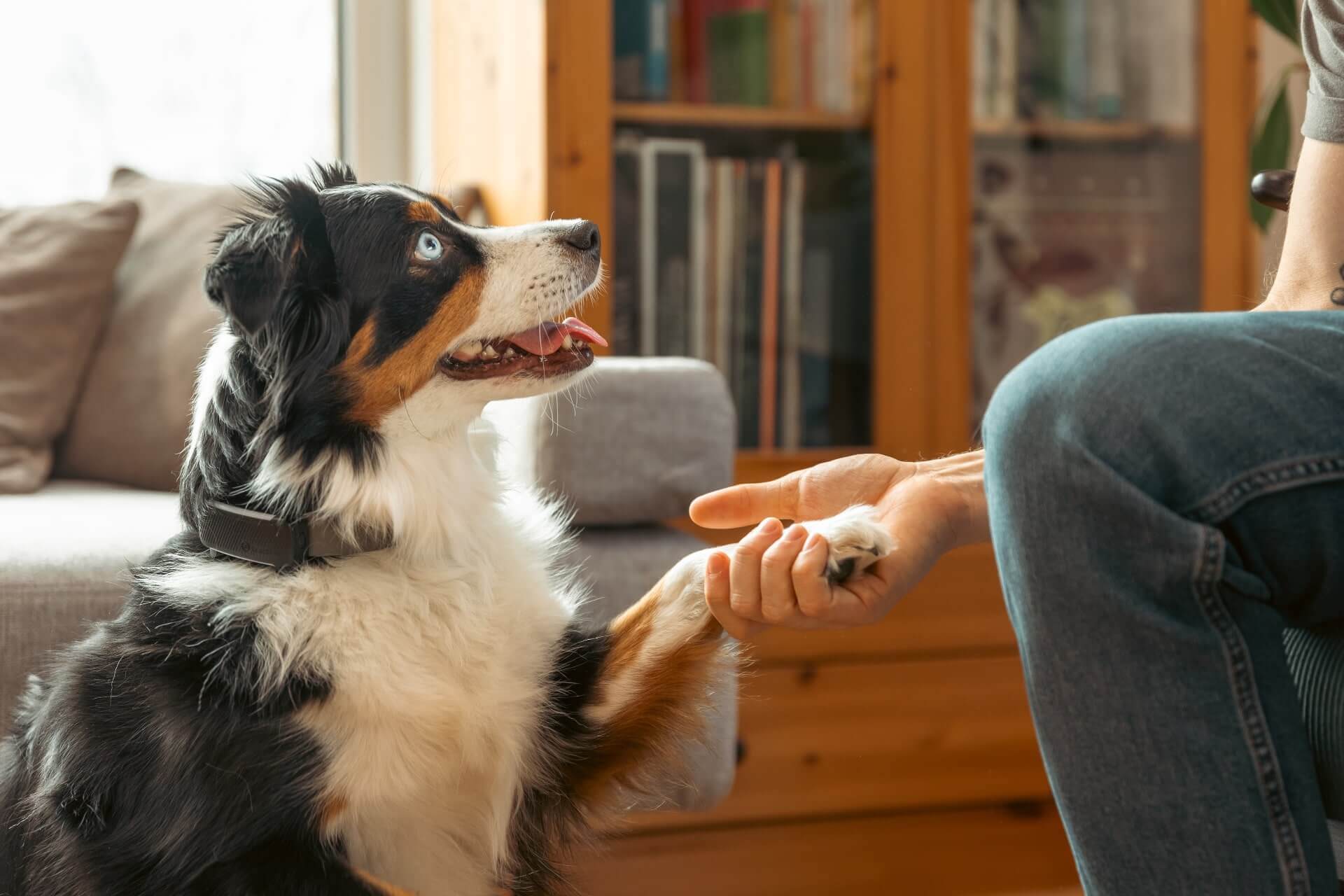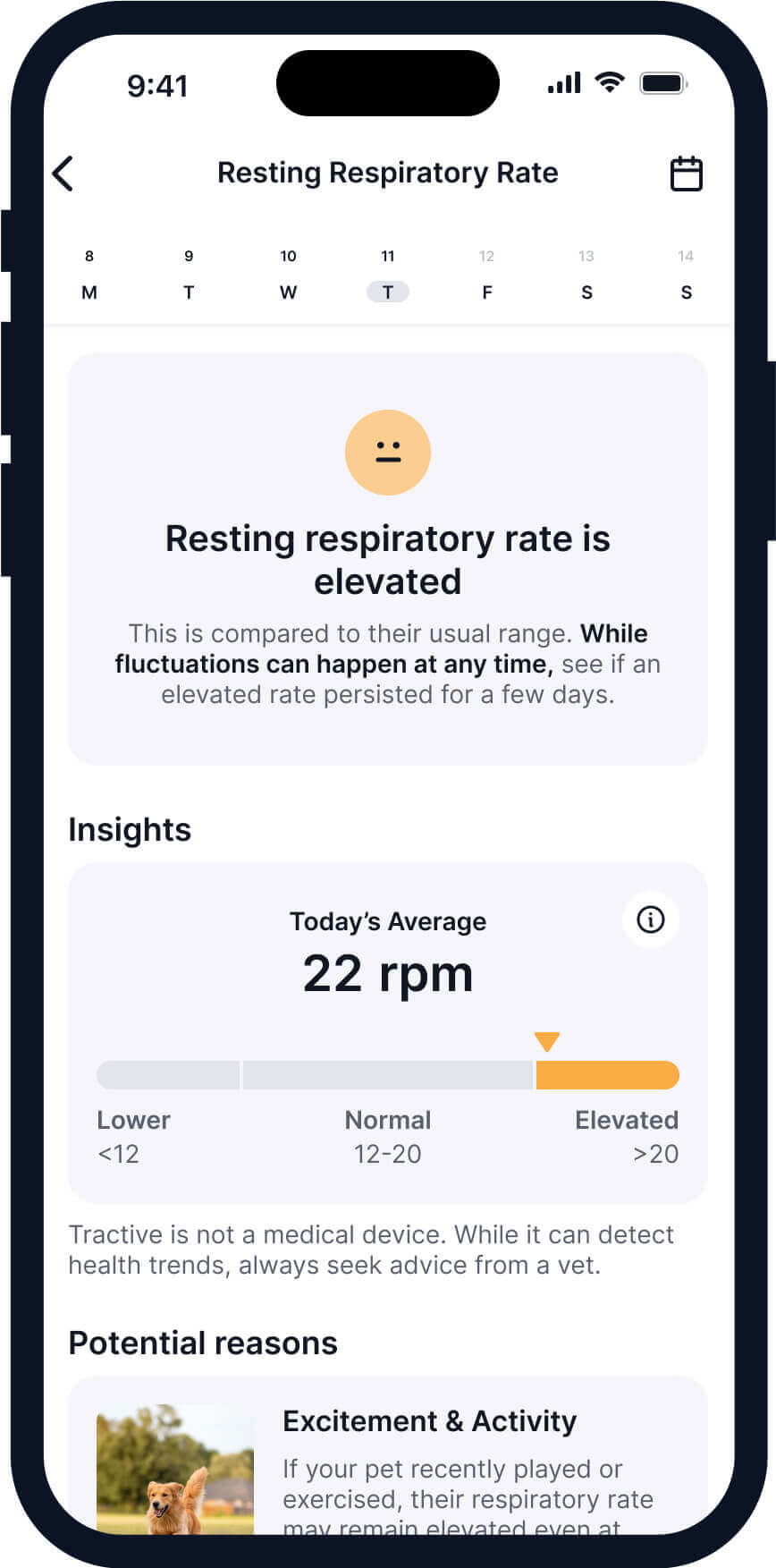Dog Not Sleeping At Night? What Could Be Underlying It
Routine changes, behavioral issues, or a health condition? Here are some of the reasons you've got a dog not sleeping at night & what to do.
Ever found yourself wide awake at 3 AM, wondering why your usually sleepy pup is pacing the halls or nudging you for attention? You’re not alone. A dog not sleeping at night can be incredibly frustrating – and worrying! It’s not just about your lost sleep; it could be a sign that your furry friend isn’t feeling their best. Let’s dive into why your dog might be struggling to sleep at night, what you can do about it, and where a smart dog tracker that monitors your dog’s sleep and vital signs can help.
Key Takeaways
A dog’s sleep issues can stem from various factors. Like, for example, environmental discomfort, insufficient exercise, anxiety, cognitive decline (especially in senior dogs), or underlying medical conditions.
Simple adjustments like increasing daytime activity, establishing a consistent schedule, and providing a comfortable, quiet sleeping space can often resolve mild issues.
If environmental or behavioral changes don’t help, or if you suspect pain or illness, head to your vet to rule out serious medical conditions.
A smart dog tracker with Health Monitoring can help you better understand your dog’s activity, sleep quality, and vital signs – helping you and your vet identify and address problems earlier.

Always know your buddy is healthy & safe
Read moreWhy is my dog not sleeping at night?
When your dog isn’t sleeping at night, it’s like they’re trying to tell you something. Their inability to settle down can stem from a variety of reasons. Including:
Environmental factors & routine disruptions
- Too much energy
If your dog isn’t getting enough physical exercise or mental stimulation, they might have a surplus of energy come bedtime. A dog not sleeping at night and pacing is often a classic sign of pent-up energy. - Your dog’s sleeping space
Is their bed cozy enough? Is it too hot or too cold? Is there too much light or noise? Dogs need a quiet, comfortable, and safe space to truly relax and sleep. Outdoor noises, streetlights, or even your own late-night activities can disturb your dog’s sleep. - A change in routine
A sudden change in your schedule, feeding times, or even a new family member or pet can throw them off and affect their sleep patterns.
Behavioral & emotional causes
- Anxiety or stress
Separation anxiety, fear of thunderstorms, or general stress can manifest as restlessness at night. Your dog might pace, whine, or seek constant reassurance. - Attention seeking
Sometimes, if your dog gets attention (even negative attention like a stern “no!”) when they’re restless at night, they might learn that it’s a way to get you to interact with them. - Cognitive decline
A senior dog not sleeping at night can often be experiencing Canine Cognitive Dysfunction (CCD). Similar to Alzheimer’s in humans, symptoms include disorientation, changes in sleep-wake cycles (sleeping more during the day, awake at night), pacing, and anxiety.
Underlying health issues
Many medical conditions can disrupt a dog’s sleep. Including:
- Pain or discomfort
Arthritis, dental pain, injuries, or any chronic pain can make it difficult for your dog to get comfortable enough to sleep. You might notice them shifting positions frequently. - Urinary issues
Frequent urination due to a UTI, kidney disease, or even just drinking too much water before bed can lead to multiple potty breaks at night. - Gastrointestinal problems
Upset stomachs, acid reflux, or other digestive issues can cause discomfort and restlessness. - Hormonal imbalances
Conditions like Cushing’s disease or thyroid problems can affect a dog’s energy levels and sleep patterns. - Neurological issues
Seizures (even mild ones), or other neurological conditions can disrupt sleep. - Heart or respiratory conditions
Difficulty breathing or heart discomfort can make it hard for a dog to lie down comfortably and sleep. This is particularly crucial for senior dogs.
💡A smart dog tracker with Health Monitoring can help you monitor your dog’s sleep cycles and even vital signs, including their breathing and heart rate – and catch on to a change quicker and earlier. So you can get them over to your vet for a checkup much in advance.

Get health alerts for your dog
Our pups can’t always tell us if something’s wrong. But if their tracker detects unusual changes in their routine, you’ll get an alert, helping you catch potential issues early.
Tips to help your dog sleep through the night
Following a solid, consistent bedtime routine can help regulate your dog’s internal clock. Offer your dog a late-night potty break right before bed too, just in case. It’s also a good idea to keep your dog well-exercised and mentally active throughout the day. Long walks, playtime, puzzle toys, and training sessions can help tire them out. (Both physically and mentally.)
Switching up your dog’s sleeping environment can also go a long way. Make sure they have a comfortable, supportive bed that’s appropriate for their size and age. Orthopedic beds are great for senior dogs. Their sleeping area should also be quiet and dark. Consider blackout curtains or a white noise machine if necessary. (Though senior dogs might benefit from a night light if they get disoriented and need help getting around.) Finally, keep the room temperature comfortable – neither too hot nor cold.
If you suspect anxiety as a culprit, consider calming aids like pheromone diffusers, calming treats, or ThunderShirts. Just make sure to get the green light from your vet before using any of these. They can also point you in the direction of a professional trainer or behaviorist to address any specific anxieties. (Or cognitive decline, if that’s the case.)
If you’ve tried everything else and your dog is still restless at night, a trip to the vet is non-negotiable. Describe all their symptoms, even the subtle ones. Your vet can perform a thorough examination and recommend tests to identify or rule out underlying health issues.
Read more: How To Get Your Dog To Sleep Through The Night
Where a smart dog tracker with Health Monitoring can step in
A smart dog tracker with Health Monitoring – like Tractive – can help you better understand your dog’s sleep habits and health. (Especially when they’re not sleeping well.) Monitoring their sleeptime habits isn’t the easiest, especially when you need to sleep yourself. That’s where technology can lend a hand.

Strapped to your dog’s collar, you can now:
- Check if your dog’s gotten enough exercise
Tractive devices come with a built-in motion detector to monitor your dog’s daily activity levels. Are they getting enough exercise? Are they more restless than usual? This data can help you adjust their daytime routine to ensure they’re tired enough for sleep. - Check your dog’s vital signs
Like their breathing rate and heart rate. Changes in these vital signs, even subtle ones, can be early warning signs of pain, discomfort, or underlying health conditions (e.g., increased breathing rate at rest could indicate pain or respiratory issues).

- Monitor how well your dog’s been sleeping
Including how long they sleep, how often they wake up, and even the quality of their sleep. A sudden change in sleep duration or an increase in restlessness during sleep can be an early indicator of a problem. - Spot potential health issues early
If your tracker notices a change in your dog’s regular activity or sleep, it’ll send you a Health Alert. So you can get them over to a vet earlier for a checkup – before their condition worsens.
Imagine being able to tell your vet, “My dog’s resting heart rate has been consistently higher for the past week, and they’re waking up every hour at night.”? This kind of data is incredibly powerful for diagnosis and means a much more productive conversation with your vet. Instead of relying solely on memory, you can provide concrete data that might help them pinpoint the problem faster.
Seeing your dog struggle with sleep is tough. But with a bit of detective work and the right tools, you can often help them get back to their peaceful slumber. Remember to stay patient with them, observe any change in their usual behaviors, and stay in touch with your vet.



